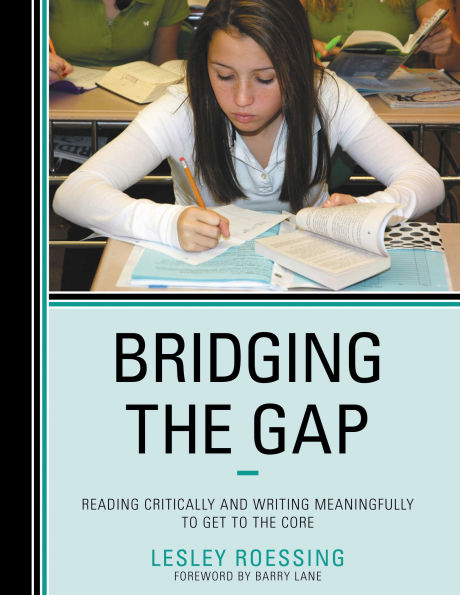One of the most popular literary genres, memoir can provide literary and literacy access to reluctant adolescent readers and writers, and help bridge the achievement gap by motivating students to read more critically and write more meaningfully about what matters most to them. The introspective nature of memoir helps students learn about themselves and connect with their environment or community, while also meeting a variety of Common Core standards.
In this way, memoirs and creative nonfiction can provide a bridge between
fiction and nonfiction reading, narrative and informative writing, reading and writing, and can afford a “way in” to literacy for all adolescents.
Special features of the book:
examples of multiple mentor texts in each chapterteacher examples with think-aloud exercisesa variety of student samples from diverse learnersactivities to engage all learnersan appendix of teacher resources a reference list of over 150 full-length memoirs for grades 5-12 for whole-class, book club, or independent readinga list of writing resources for students and teachers12 full-size reproducible materials for teacher and student usea variety of reading, writing, speaking, and listening strategies and activitiesacross-disciplines applications and adaptations for diverse learnersdaily writing focus lessons in gradual-release-responsibility formatCommon Core State Standard connections at the end of each chapter
1119140766
In this way, memoirs and creative nonfiction can provide a bridge between
fiction and nonfiction reading, narrative and informative writing, reading and writing, and can afford a “way in” to literacy for all adolescents.
Special features of the book:
examples of multiple mentor texts in each chapterteacher examples with think-aloud exercisesa variety of student samples from diverse learnersactivities to engage all learnersan appendix of teacher resources a reference list of over 150 full-length memoirs for grades 5-12 for whole-class, book club, or independent readinga list of writing resources for students and teachers12 full-size reproducible materials for teacher and student usea variety of reading, writing, speaking, and listening strategies and activitiesacross-disciplines applications and adaptations for diverse learnersdaily writing focus lessons in gradual-release-responsibility formatCommon Core State Standard connections at the end of each chapter
Bridging the Gap: Reading Critically and Writing Meaningfully to Get to the Core
One of the most popular literary genres, memoir can provide literary and literacy access to reluctant adolescent readers and writers, and help bridge the achievement gap by motivating students to read more critically and write more meaningfully about what matters most to them. The introspective nature of memoir helps students learn about themselves and connect with their environment or community, while also meeting a variety of Common Core standards.
In this way, memoirs and creative nonfiction can provide a bridge between
fiction and nonfiction reading, narrative and informative writing, reading and writing, and can afford a “way in” to literacy for all adolescents.
Special features of the book:
examples of multiple mentor texts in each chapterteacher examples with think-aloud exercisesa variety of student samples from diverse learnersactivities to engage all learnersan appendix of teacher resources a reference list of over 150 full-length memoirs for grades 5-12 for whole-class, book club, or independent readinga list of writing resources for students and teachers12 full-size reproducible materials for teacher and student usea variety of reading, writing, speaking, and listening strategies and activitiesacross-disciplines applications and adaptations for diverse learnersdaily writing focus lessons in gradual-release-responsibility formatCommon Core State Standard connections at the end of each chapter
In this way, memoirs and creative nonfiction can provide a bridge between
fiction and nonfiction reading, narrative and informative writing, reading and writing, and can afford a “way in” to literacy for all adolescents.
Special features of the book:
examples of multiple mentor texts in each chapterteacher examples with think-aloud exercisesa variety of student samples from diverse learnersactivities to engage all learnersan appendix of teacher resources a reference list of over 150 full-length memoirs for grades 5-12 for whole-class, book club, or independent readinga list of writing resources for students and teachers12 full-size reproducible materials for teacher and student usea variety of reading, writing, speaking, and listening strategies and activitiesacross-disciplines applications and adaptations for diverse learnersdaily writing focus lessons in gradual-release-responsibility formatCommon Core State Standard connections at the end of each chapter
52.2
In Stock
5
1

Bridging the Gap: Reading Critically and Writing Meaningfully to Get to the Core
164
Bridging the Gap: Reading Critically and Writing Meaningfully to Get to the Core
164Related collections and offers
52.2
In Stock

Product Details
| ISBN-13: | 9781475810936 |
|---|---|
| Publisher: | Bloomsbury Publishing |
| Publication date: | 07/30/2014 |
| Sold by: | Barnes & Noble |
| Format: | eBook |
| Pages: | 164 |
| File size: | 2 MB |
About the Author
From the B&N Reads Blog
